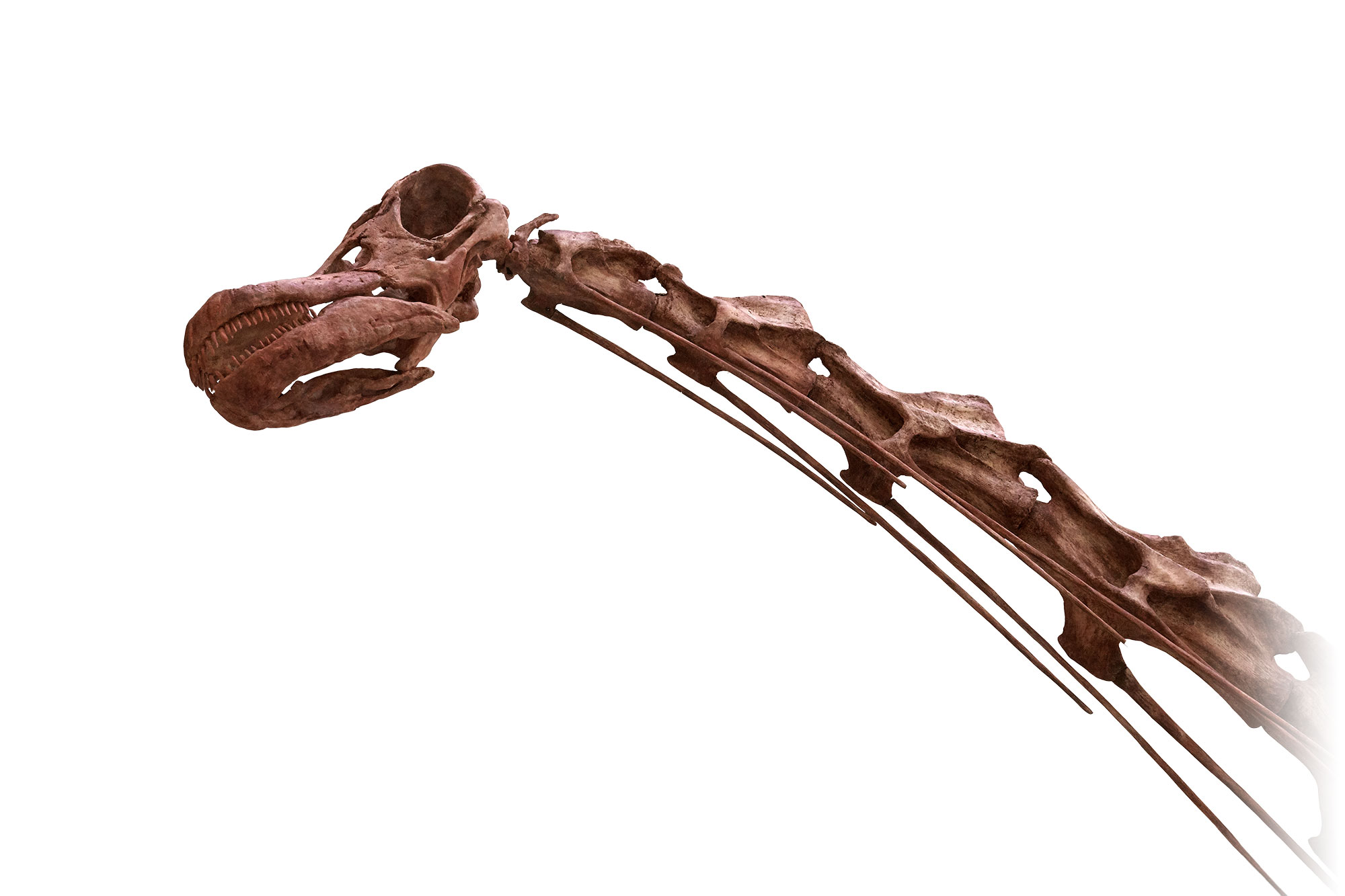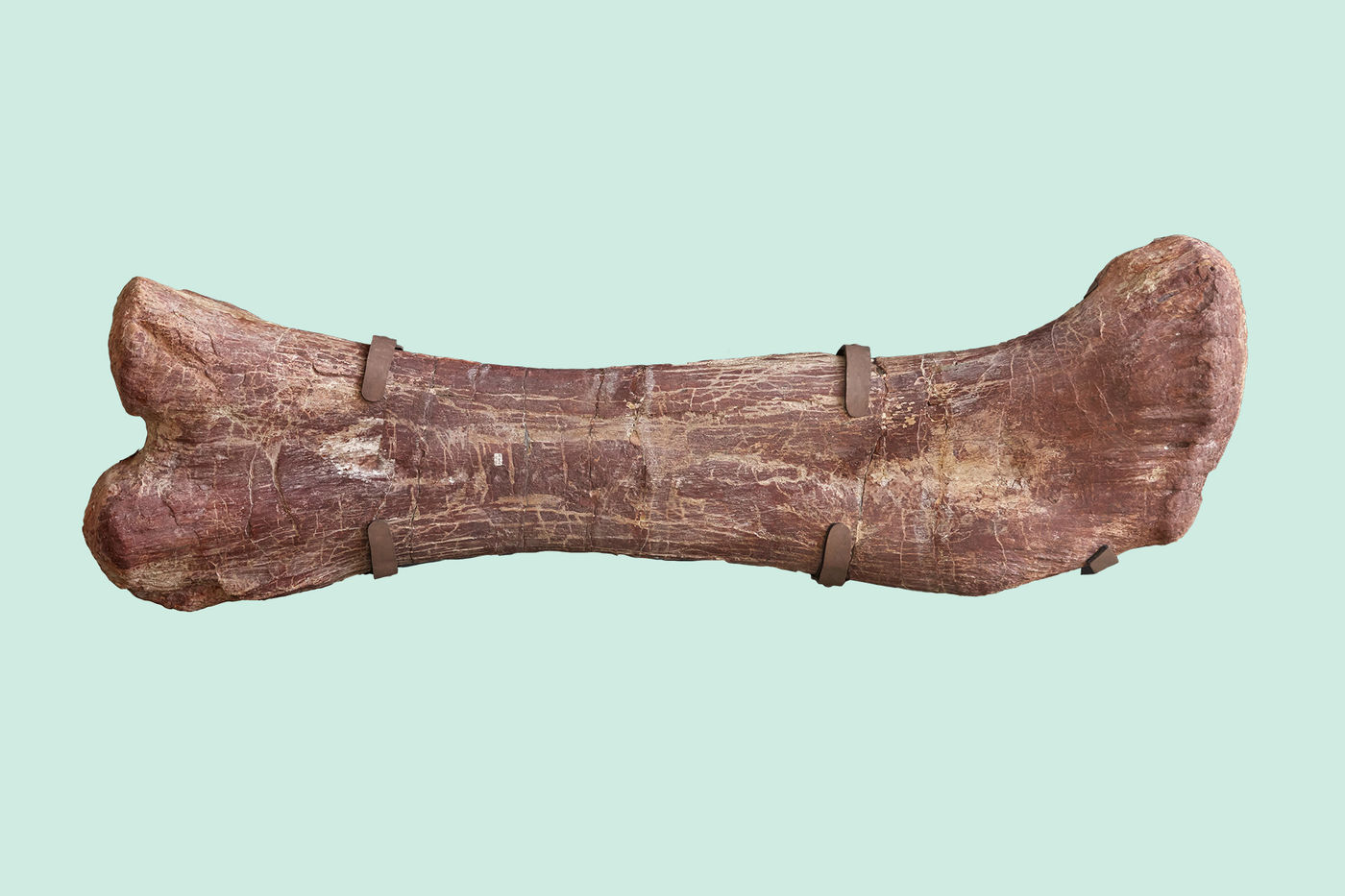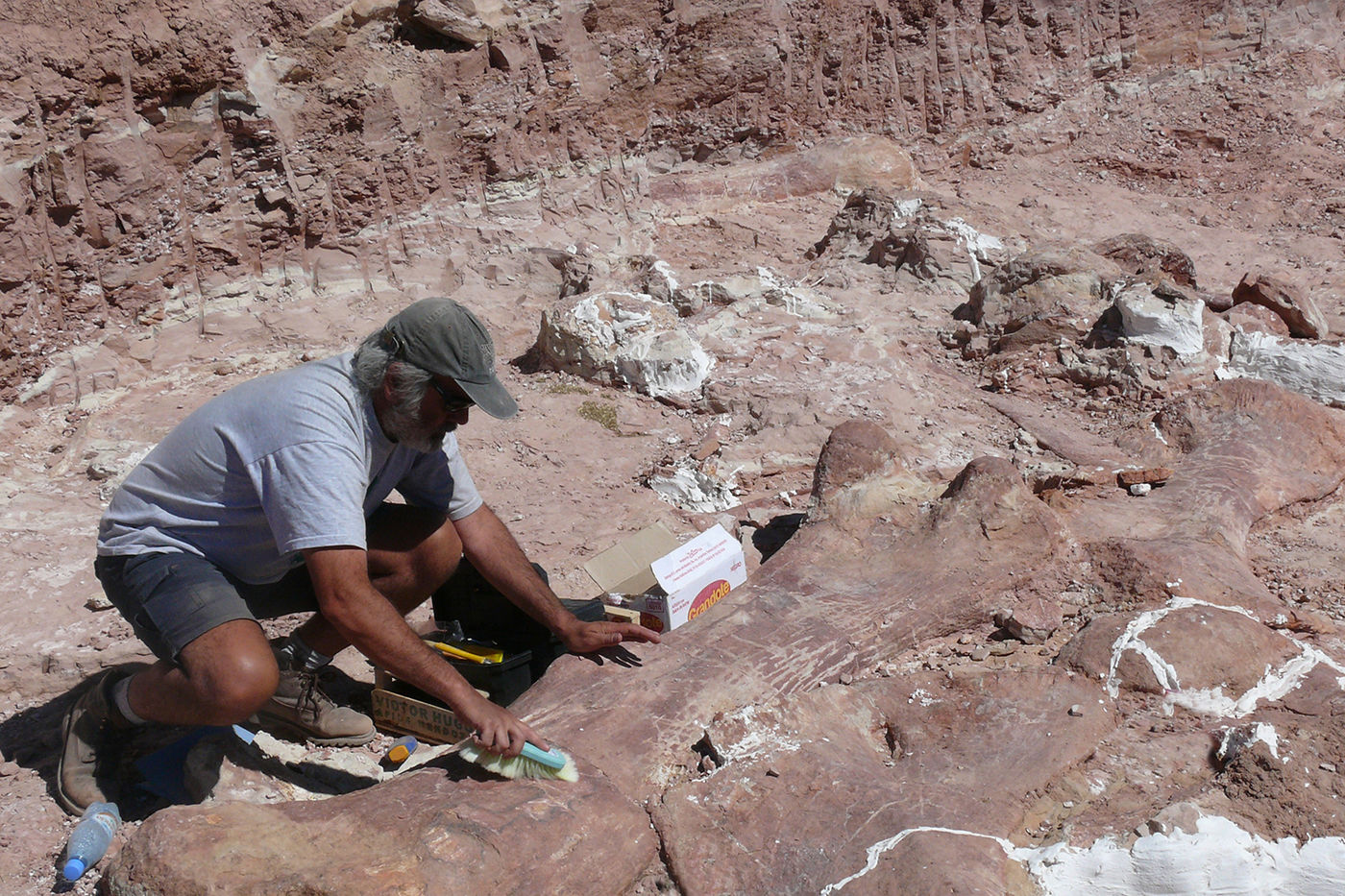The titanosaur Patagotitan mayorum is a big deal—literally, the biggest dinosaur that scientists have discovered to date. This long-necked, plant-eating dinosaur lived over 100 million years ago in what is now Patagonia, Argentina.

Named Máximo, meaning “maximum” or “most” in Spanish, our titanosaur cast reaches 122 feet across Stanley Field Hall on our main floor and stands 28 feet tall at the head. Modeled from fossil bones excavated in Argentina, this cast conveys the sheer size of the biggest animal ever to live. (It’s longer than a blue whale!) Patagotitan weighed about 70 tons in life—that’s as much as 10 African elephants, like the two specimens on display next to Máximo.

The exhibition is presented in both English and Spanish. La exhibición está presentada en inglés y español.






